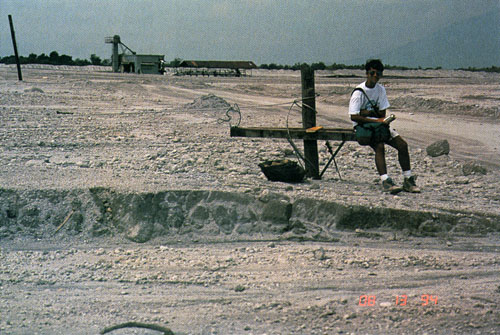Ok, you are right, just 98% of them. The rest in amber and a few that got covered in volcanic eruptions, so 2% out of several billion fossils. Snicker.
Why Are Fossils Only Found in Sedimentary Rocks? - Ask.com
Some are found in metamorphic rock, which is just sedimentary rock subjected to high temperature after the fossil has already formed.
You need to study up on your geology bub. Your ignorance is showing.
Exactly, because they were not formed by the flood which deposited the fossils, and this is why they lack any fossils. You just proved flood theory and didn't even know it in your zeal to disprove it.
If you understood what you just said above, you would know flood theory is the only theory that fits. Sedimentary rock formed by processes other than water deposit, as you rightly pointed out, tend not to have fossils in them. But that corrolation has never crossed your mind because you like to ignore evidence that does not fit your fantasies. You just pointed out the best claim for flood theory, the fact that sedimentary rock formed by processes other than water deposit rarely have fossils in them.
Seems your scientists are saying you know nothing about what you speak
http://www.icrs2012.com/proceedings/manuscripts/ICRS2012_4C_1.pdf
"Linear extension, measured as change in length for individually tagged branches (or columns), was quantified for 394 branches, on 138 colonies from 6 genera. Of the 394 branches that were tagged in December 2010, 93.7% (369/394) were alive and growing in March 2011. Estimates of linear extension obtained using direct tagging were consistent between sites for all genera except Acropora where the linear extension at Horseshoe Reef was 14.76 ± 1.45 mm (mean ± SE) and North Bay was 18.53 ± 2.47 mm. The linear extension varied significantly within and among coral genera (Table 2). Acropora had the greatest mean linear extension (16.62 ± 1.43 mm) (Fig. 2). The slowest growing coral was Pocillopora with a branch mean linear extension of 2.15 ± 0.27 mm."
So in 3 months they grew anywhere from 1/2 inch or more. In 20 years? Add it up.
Acropora cervicornis grows over 10 inches per year. That's 16 feet in 20 years. 83 feet every 100. How thick are your coral beds? Snicker, snicker.
Roth, A. A. --- Coral Reef Growth



 ... C'mon!
... C'mon!